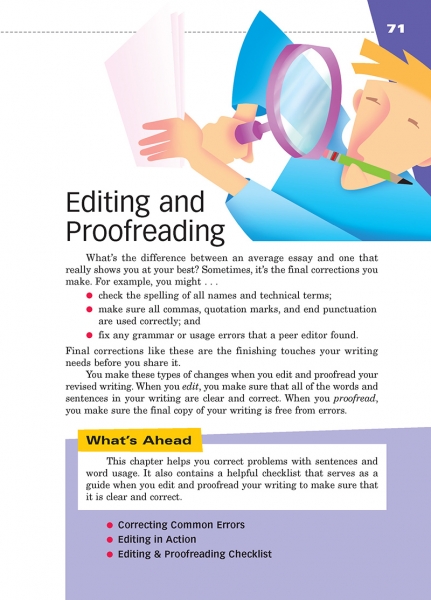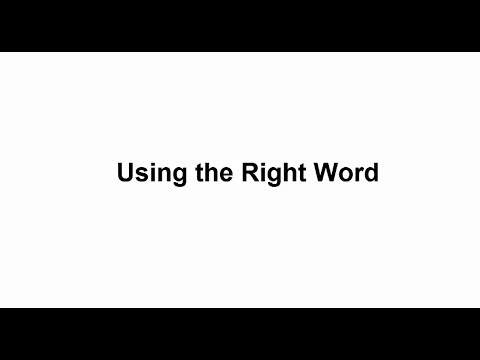Correcting Common Errors
This page presents two little curved punctuation marks (commas and apostrophes) that cause all kinds of problems. You'll note that the Proofreader's Guide section on commas spans six pages (pages 467–472), which is three times as many as all of the end punctuation put together. Many of us were taught to put a comma wherever you would naturally pause when speaking. That's a good starting point, but students need to move beyond it to understand the specific rules. Well-placed commas make ideas clear. Poorly placed commas make ideas confused.
The first two rules deal with commas used to join sentences. Show your students this example:
Rob spoke to Aidan and Gabe wrote to Eli.
The first time you read that sentence, you think Rob spoke to Aidan and Gabe, but then you hit the verb "wrote" and realize that "Gabe" isn't a direct object but instead a new subject. You have to read the sentence again to understand the meaning, and anytime a reader has to reread, the writer has failed. Help your students see that one little comma makes the ideas clear.
Rob spoke to Aidan, and Gabe wrote to Eli.
Whenever students join two simple sentences into a compound sentence, they need a comma and a coordinating conjunction (and, but, or, nor, for, so, or yet) or a semicolon. If they leave out the comma (as above), they have a comma error. If they leave out the coordinating conjunction, they have a comma splice, and if they leave out both, they have a run-on sentence.
Rob spoke to Aidan, Gabe wrote to Eli. (comma splice)
Rob spoke to Aidan Gabe wrote to Eli. (run-on sentence)
Help your students see that these comma problems lead to unclear ideas and difficult reading. (When students understand the why of a grammar rule, they are more likely to remember the rule.) Learning this one rule can help students avoid three different types of sentence errors.
For the third rule, show students these two examples:
I want to thank my parents, Cher and Bono.
The sandwiches include bacon and tomato, peanut butter and jelly and ham and cheese.
In the first example, is the writer thanking two people (Cher and Bono, his parents) or four people (Cher, Bono, and his parents)? The ideas are unclear without the series comma after "Cher." In the second example, do the sandwiches include "peanut butter and jelly and ham" or "jelly and ham and cheese"? The ideas are unclear without the series comma:
I want to thank my parents, Cher, and Bono.
The sandwiches include bacon and tomato, peanut butter and jelly, and ham and cheese.
The final rule on this page deals with apostrophes to show possession. This rule covers more than just its and it's. It also covers whose and who's, their and they're, and your and you're—a whole class of misused words. If students learn this one rule, they can avoid all of those issues: Do not use an apostrophe to show possession with pronouns.






